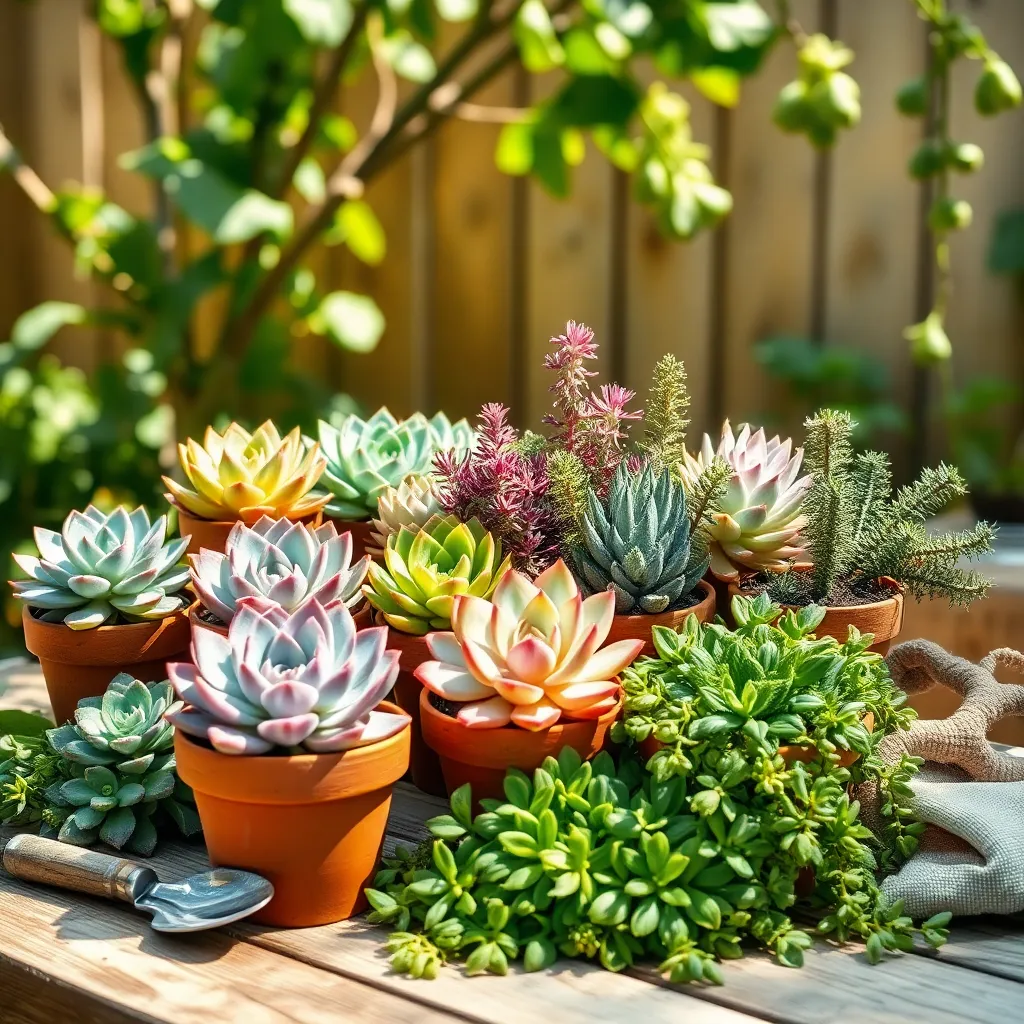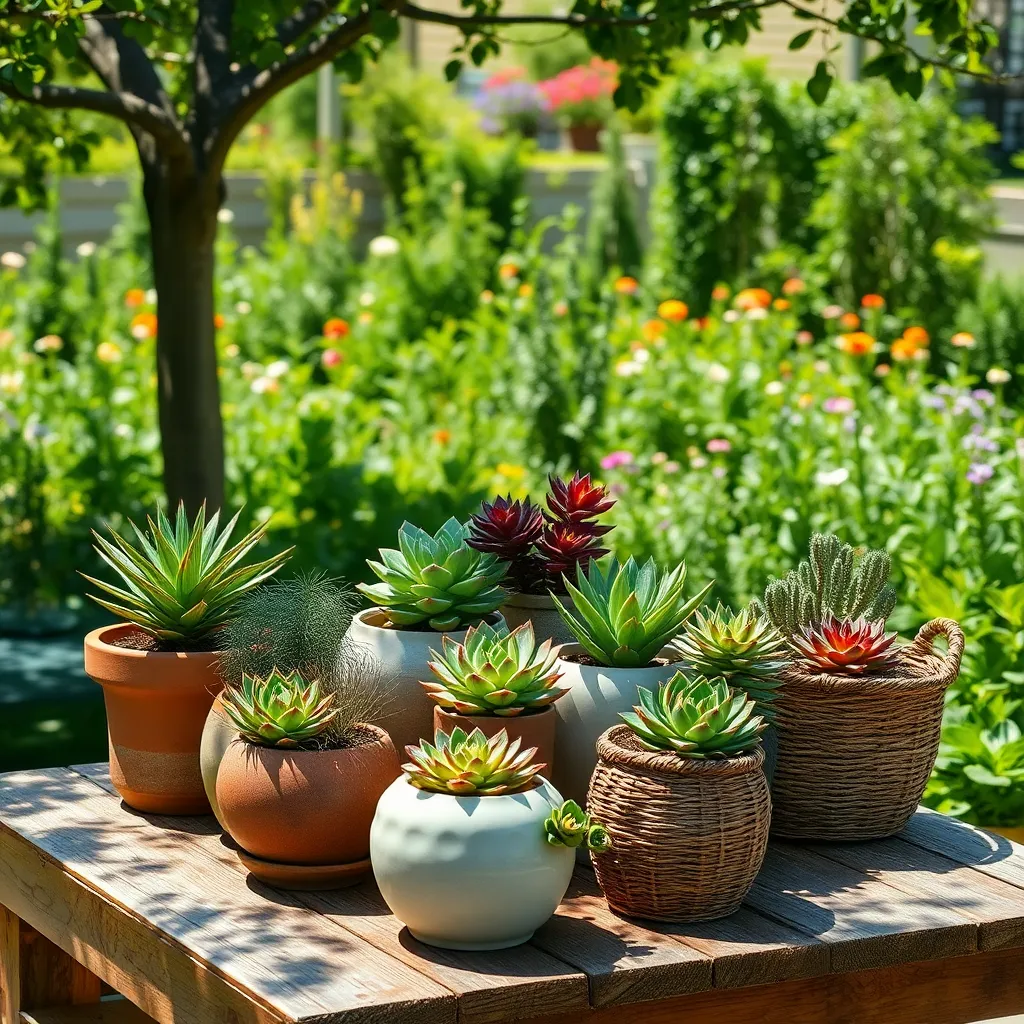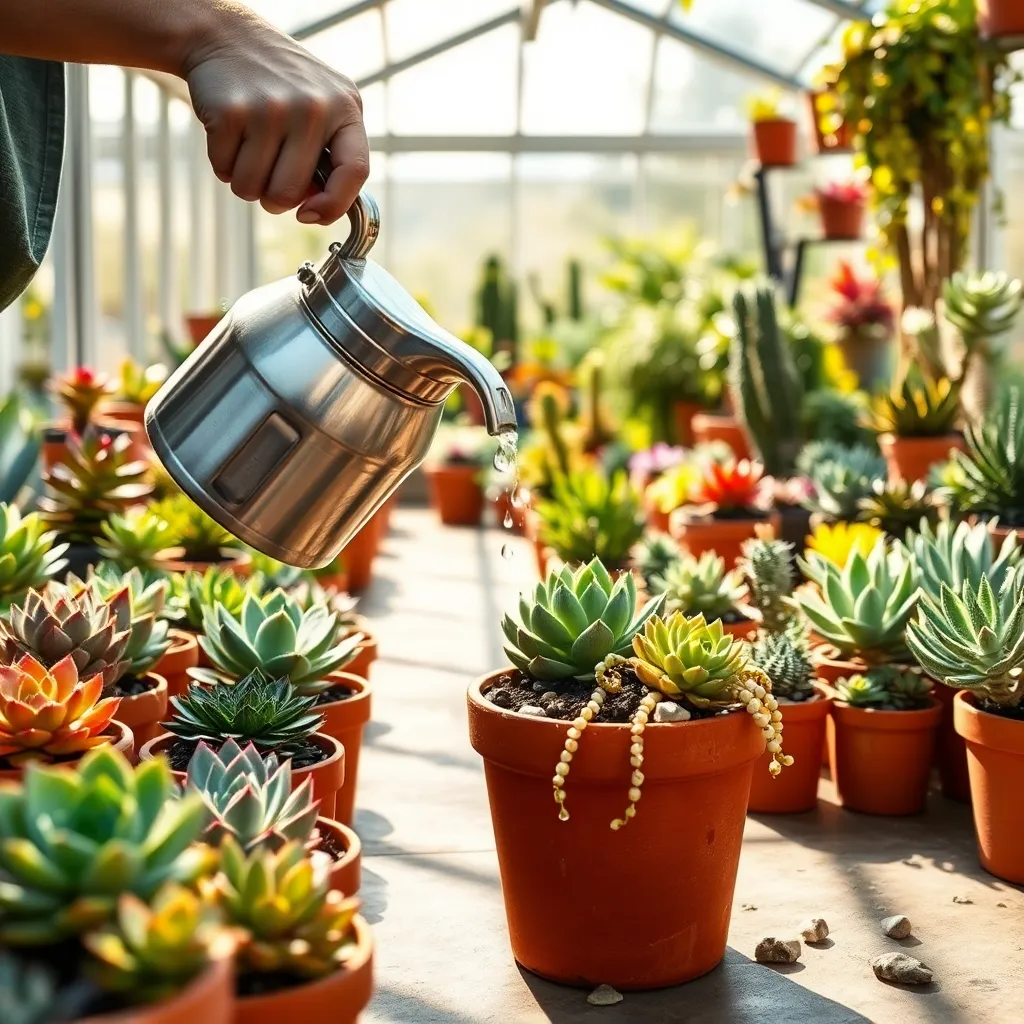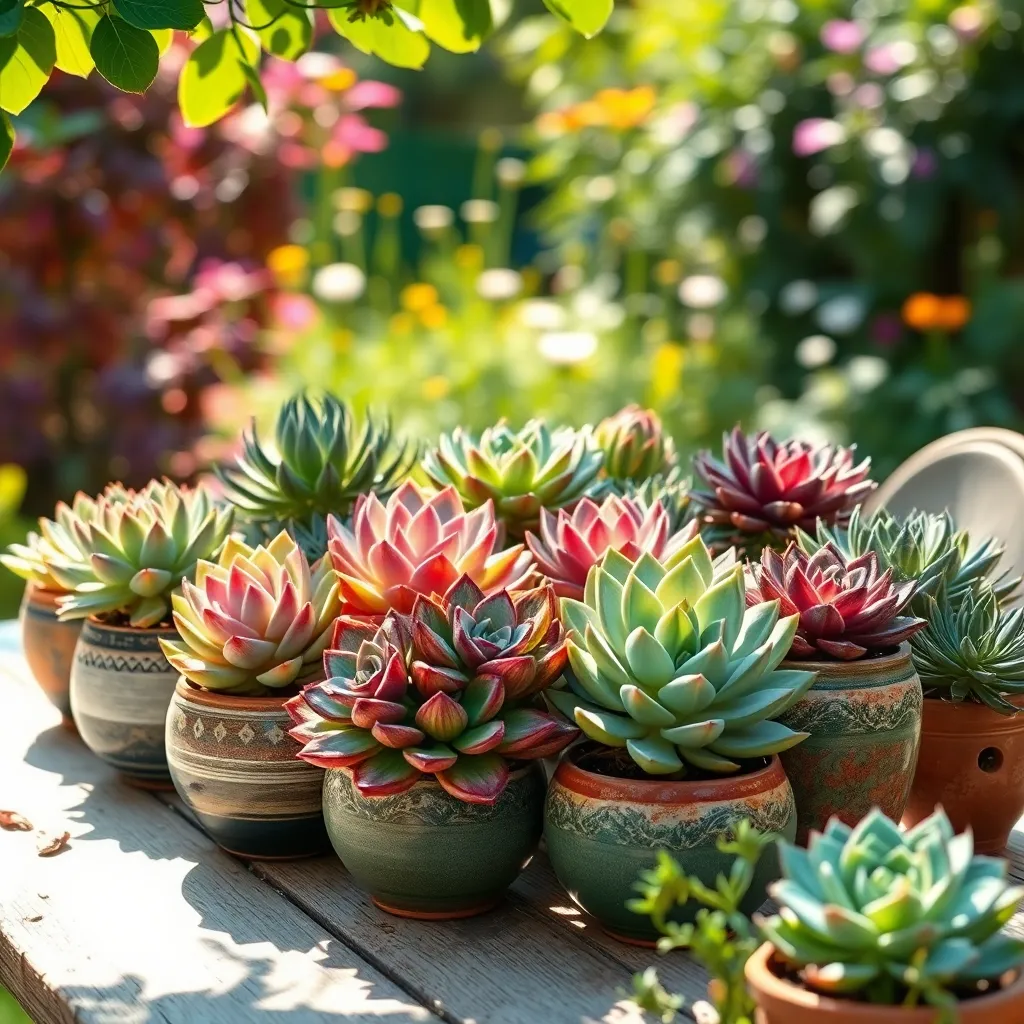Stepping into the world of gardening with succulents in containers is like unlocking a treasure chest of vibrant possibilities. Whether you’re a seasoned gardener or just beginning to flex your green thumb, succulents offer a delightful and low-maintenance way to bring nature’s beauty into your home or garden. These hardy plants are not only captivating with their diverse shapes and colors but also incredibly forgiving, making them perfect companions for busy lifestyles or those new to plant care.
The beauty of container gardening with succulents lies in its versatility and simplicity. You can create stunning arrangements that thrive in small spaces, adding a touch of greenery to your windowsill, patio, or desk. In this article, we’ll explore how to choose the right containers and soil mix to ensure your succulents flourish. We’ll also delve into the essential care tips that make these resilient plants a joy to nurture, from light requirements to watering techniques that mimic their natural habitat.
By the end of this guide, you’ll feel confident in crafting your own succulent container garden that reflects your unique style and space. We’ll guide you through the process of selecting complementary plant varieties and arranging them for maximum visual impact. As you embark on this journey, you’ll discover the rewarding experience of cultivating a living art piece that evolves and grows over time. Whether you’re looking to add a touch of green to your urban apartment or enhance your garden with drought-resistant beauties, gardening with succulents in containers offers endless opportunities for creativity and satisfaction.
Choosing Ideal Succulent Varieties

When selecting succulents for container gardening, consider their light requirements and growth habits. Popular choices such as Echeveria and Sedum thrive in bright, direct sunlight, making them ideal for sunny windowsills or patios.
It’s essential to choose the right soil mix to ensure the success of your succulent varieties. A well-draining mix, containing ingredients like perlite or coarse sand, helps prevent root rot by allowing excess water to escape.
Watering succulents requires a careful balance to avoid overwatering, which is a common mistake among beginners. Allow the soil to dry completely between waterings, typically once every two weeks, depending on your climate and container size.
For gardeners looking to experiment, consider trying less common varieties like Haworthia or Lithops. These succulents not only add unique textures and shapes to your collection but also require similar care, making them excellent companions to traditional options.
Selecting the Perfect Containers

When selecting containers for your succulents, consider the material and drainage capabilities. Terracotta pots are excellent choices as they allow for good air circulation and help prevent overwatering by absorbing excess moisture.
Alternatively, ceramic and plastic pots can also work well if they have drainage holes. Ensuring proper drainage is crucial to prevent root rot, a common issue with succulents in non-draining containers.
For those new to succulent gardening, start with small containers that are just slightly larger than the plant itself. This helps control moisture levels and prevents overwatering, a frequent mistake among beginners.
Experienced gardeners might experiment with creative container arrangements, such as hanging pots or wall-mounted planters. These options not only save space but can also create stunning visual displays while still providing necessary drainage.
Certain succulents, like those with shallow roots, thrive in wide, shallow dishes. This design mirrors their natural habitat, offering ample space for spreading roots without retaining excess moisture.
Regardless of the container chosen, always use a well-draining soil mix specifically designed for succulents. This is key to preventing waterlogging and ensuring the long-term health of your plants.
Preparing Potting Mix for Success

To begin with, creating the right potting mix is crucial for the success of your succulent container garden. Succulents require a well-draining soil to thrive, preventing root rot which can occur in overly moist environments.
Consider using a commercial cactus mix as a base, which is specifically formulated for succulents and cacti. Alternatively, you can create your own by mixing two parts potting soil with one part coarse sand and one part perlite or pumice, ensuring excellent drainage.
It’s important to ensure the mix is light and airy, which facilitates healthy root growth and water movement. Additionally, adding a handful of small gravel or crushed granite can enhance drainage and mimic the succulents’ natural habitat.
For those looking to elevate their succulent care, consider incorporating a slow-release fertilizer into the mix. This provides a steady supply of nutrients without overwhelming the plants, as succulents generally require less feeding than other container plants.
Mastering Watering and Drainage

Watering and drainage are crucial elements for the health of succulents in containers. To thrive, succulents need a balance of moisture and dryness, as they store water in their leaves, stems, and roots.
When watering your succulents, aim to thoroughly soak the soil and then allow it to dry out completely before the next watering. This approach mimics the succulents’ natural environment and helps prevent root rot, a common issue caused by overwatering.
Ensure your containers have adequate drainage holes to allow excess water to escape. Without proper drainage, water can accumulate at the bottom, leading to soggy soil and unhealthy plants.
For those looking to refine their watering technique, consider using a moisture meter to precisely gauge when the soil is dry enough for the next watering. This tool is especially helpful for beginners who may not yet recognize the subtle signs of a succulent’s water needs.
Advanced gardeners might explore the use of wick irrigation systems for larger succulent arrangements or indoor displays. These systems can help maintain consistent moisture levels without the risk of overwatering, offering a high degree of control and convenience.
Arranging and Displaying Your Succulents

Arranging and displaying your succulents can transform any space into a vibrant, living art piece. Start by selecting containers that complement each other in style and size, ensuring they all have adequate drainage holes to prevent root rot.
Next, consider the growing conditions when arranging your succulents, as different varieties have varying light and water needs. Place sun-loving succulents like Echeveria and Sedum in brighter spots, while Aloes and Haworthias can thrive in partially shaded areas.
Think about creating a visual balance in your display by mixing succulents of different heights, textures, and colors. Use taller succulents like Aeoniums as focal points, and pair them with trailing varieties such as String of Pearls to add dimension and depth to your arrangement.
To maintain your succulent display, rotate your containers every few weeks to ensure even growth and prevent them from leaning towards the light. Regularly check the soil moisture, and water only when the top inch is dry, which typically means once every two weeks for most succulents, depending on humidity and light levels.
Conclusion: Growing Success with These Plants
In exploring the parallels between container gardening with succulents and nurturing healthy relationships, we delved into five key concepts: the importance of choosing the right environment for growth, understanding the balance of independence and togetherness, recognizing the value of patience and time, fostering resilience through diversity, and the significance of mindful nurturing to maintain vitality. By applying these principles, you can cultivate more meaningful and robust connections in your life.
As an immediate step, consider starting a small succulent garden with a loved one, allowing you to practice these concepts in a tangible way. This shared experience can enhance your bond and serve as a reminder of the care required in relationships.
Remember, each relationship is a living entity that flourishes with attention and intention. Bookmark this article as a handy guide to revisit these insights whenever you need a gentle nudge towards cultivating loving and enduring relationships.
Looking ahead, with each mindful action, you are setting the stage for lasting relationship success. Let this newfound understanding empower you to grow both your garden and your relationships with grace and joy. 🌿
